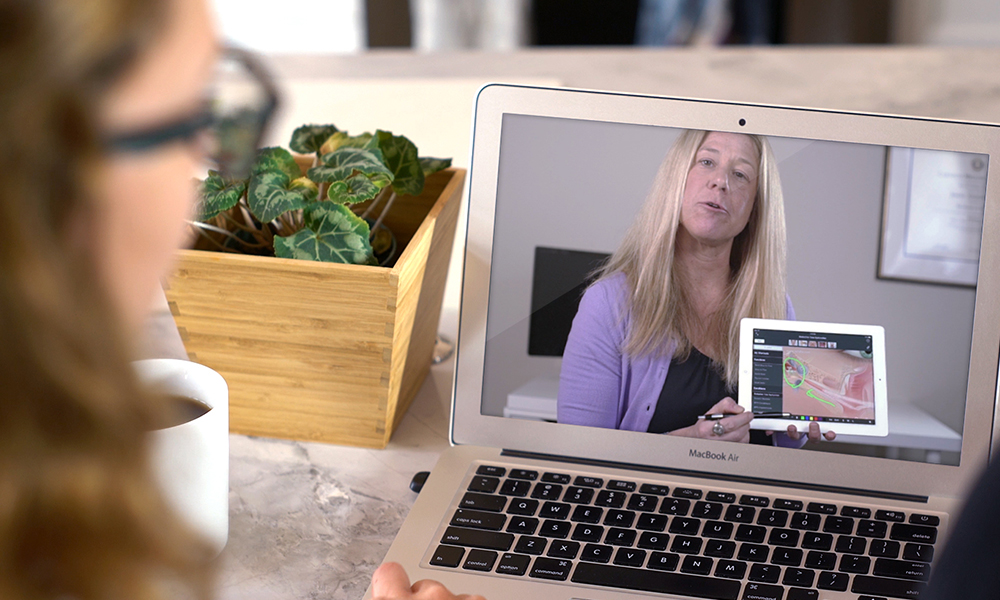Rural patients lack easy access to quality health care—but telemedicine is changing that
Recently we reported on the continuing growth of digital health technologies, which include wearables, remote monitoring, mobile health (mHealth) apps and tools, and telemedicine and telehealth. We noted that despite their promise, though, some technologies had not yet made the leap from enthusiasm to adoption by most medical practices.
That includes virtual doctor visits—offered by just 29 percent of doctors in 2016, according to a survey from the American Medical Association. Remote monitoring and management apps, particularly for patients with chronic conditions, are another area of mHealth that hasn’t yet made the cut for most doctors, the survey found.
There’s a notable exception to these findings, however: rural America, where telehealth is “taking off,” say experts.
Telehealth brings ‘big-city medicine’ to rural areas
More than 95 percent of the land area of the U.S. is classified as rural, according to the federal government. Rural areas are home to just over 19 percent of the population—59.5 million people—according to the 2010 Census. Maine, Vermont, West Virginia, and Mississippi are the most rural states in the U.S., with more than half of residents living in non-urbanized areas.
This presents a real problem when it comes to accessing health care—and particularly specialists. “Traditionally, medical specialists tend to cluster around academic medical institutions in large cities, which leaves many rural populations without easy access to quality health care or specialists,” reports athenaInsight, athenahealth’s news site. But telehealth is changing that.
In rural areas of the U.S., “telehealth is taking off out of pure need and no other option.”
“In rural states, many people have trouble accessing specialty care, and health care wait times are long,” Veenu Aulakh, executive director of the Center for Care Innovations, told athenaInsight. “Telehealth is taking off out of pure need and no other option.”
“Telehealth brings big-city medicine and the latest knowledge and tech into rural communities, where primary care providers often don’t have time to learn about the latest technology and medicine,” added Kathy Chorba, executive director of the California Telehealth Network.
Telemedicine clinics a ‘lifeline’ for children with asthma
Telehealth technology can be especially useful to help patients who suffer from chronic conditions manage their health and connect with specialists. In some cases, telehealth can literally be a “lifeline” for these patients, say doctors.
For example, Children’s Mercy Kansas City operates three telemedicine clinics that connect pediatric patients with a network of specialists across Kansas and Missouri. These families would otherwise have to drive several hours to see a specialist. The clinics serve “about 150 children a month, giving them access to some of the country’s most in-demand doctors,” reports mHealthIntelligence.com.
The hospital’s telemedicine program is especially useful in treating children diagnosed with asthma. Each visit includes a remote physical exam using digital tools, a medication check-up, and a discussion of an “asthma action plan” in case the child has an asthma attack, explains mHealthIntelligence.com.
In the U.S., 6 million+ children have asthma; some 200 die from asthma attacks each year—statistics that a Kansas City hospital is aiming to change through telemedicine.
In the U.S., 6.2 million children in the U.S. are diagnosed with asthma, according to the Centers for Disease Control. Almost 60 percent suffer a serious attack within a year’s time – and about 200 children die from asthma attacks each year, according to the American Academy of Allergy, Asthma and Immunology. The number of pediatric asthma cases is expected to triple in the coming year.
“Telemedicine is a lifeline,” Morgan Waller, MBA, Children’s Mercy KC’s director of telemedicine, told mHealthIntelligence.com. “And with demand just starting to exceed the need, it’s only going to get bigger.”
Broadband: the number-one barrier to remote care
Despite the clear need and already proven results of telehealth, obstacles to widespread adoption remain. And it’s not that the technology hasn’t lived up to the hype. “Existing telehealth platforms are generally impressive, but innovators need to turn their attention to contextual barriers: Physician acceptance, reimbursement processes, and access to high-quality, secure internet connections,” stated athenaInsight.
The biggest problem is that patients who need telemedicine the most have the least access to it due to lack of secure, high-speed Internet.
The biggest problem is that the communities that need telemedicine the most have the least access to it, due to a lack of broadband and low Internet use. According to another article on mHealthIntelligence.com, 60 percent of Americans living in rural locations have reduced access to broadband and a higher chance of getting a chronic disease, while only 5 percent of urban residents meet those conditions.
Last year the Federal Communications Commission (FCC) unveiled its “Mapping Broadband Health in America” tool to “identify opportunities and gaps in connectivity and care.” It highlights states and counties with low broadband availability and Internet use and compares health measures like diabetes, obesity, disabilities, and physician access.
Solving the problem of access to secure broadband Internet will also be necessary for telehealth to expand from clinic and hospital settings to patients’ homes, which experts predict is the future of telemedicine.
For more strategies on delivering quality patient care, subscribe to our monthly email newsletter.

